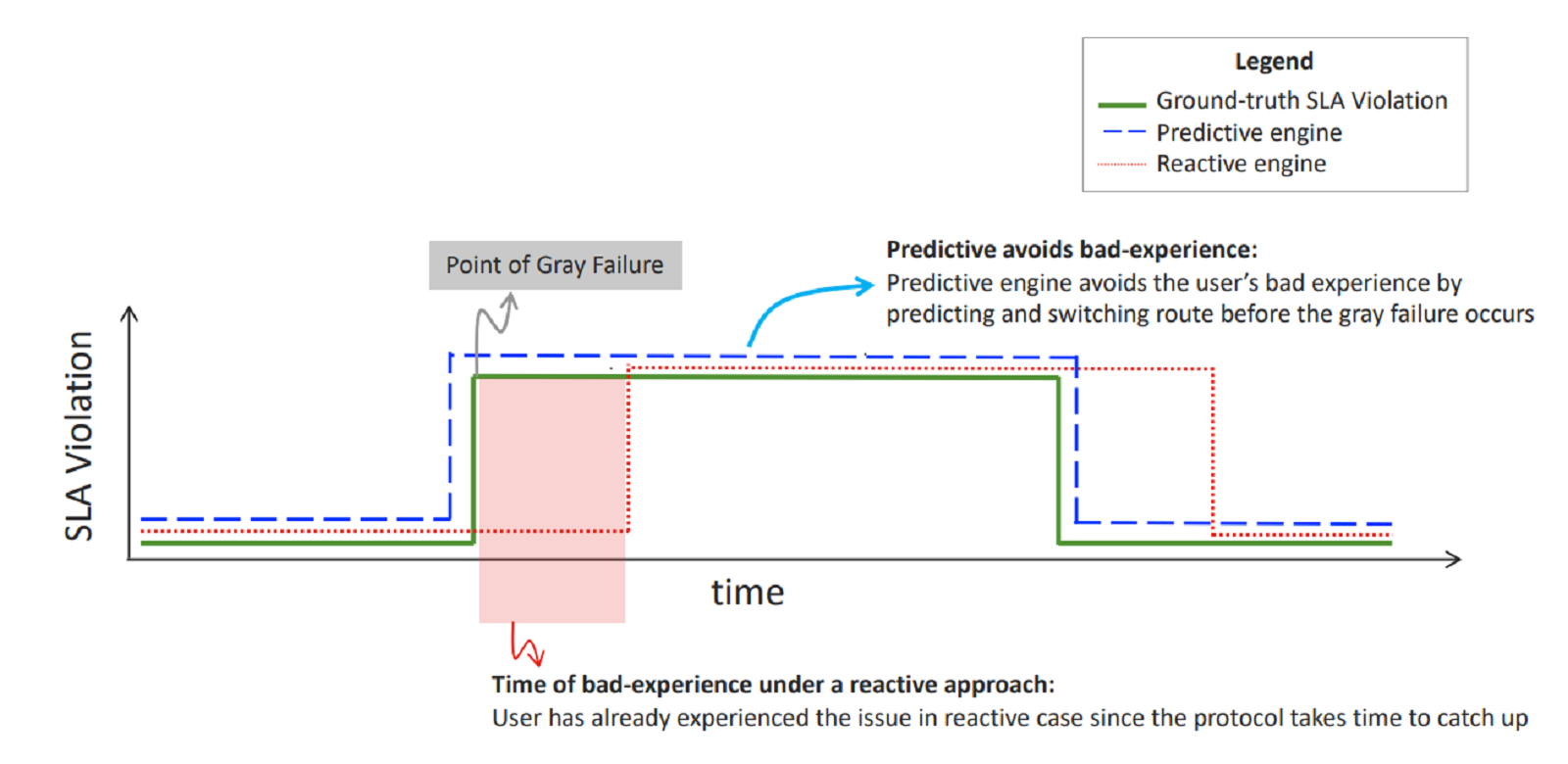If you’re reacting, then you’re already too late.
The engineering road, from reactive operations to predictive operations, has been challenging and full of obstacles. But never has it been more needed. As the Internet shifts and evolves, the speed, cost, and quality of digital experiences hang in the balance. Increases in applications running on hybrid and multicloud architectures, complexity of multi-location data centers, together with hybrid work and other digital initiatives can test the Internet and a network’s metal, pushing it to its breaking point. Reactive approaches to network management can resolve performance issues once they arise, but user trust and time, a precious commodity and NetOps old foe, are lost.
Since their introduction in 2021, predictive networks have become an important emerging approach in anticipating and remediating issues before they impact the business. In my new Cisco white paper, Reactive versus Predictive Networks, I clearly define the lines between the two and detail how the latter can optimize network performance – mitigating bad digital experiences which can leave a lasting impression on your audience.
Why predictive versus reactive networks?
Whether they be customers or remote workers, your audience has become less tolerant of poor digital experiences as of late. In fact, more than three-quarters (76 percent) stated their expectations of digital services have increased since 2020[1]. Your organization needs to be proactive in mitigating network issues to optimize application load time, reliability, and performance – providing the best user experience possible.
Unlike reactive networks which reroute traffic to alternate paths after an issue is detected (often due to connectivity issues or degraded services) predictive networks rely on telemetry and statistical data and AI/ML-based computing models to predict issues before they occur and proactively reroute traffic – thereby significantly reducing the risk of issues and user degradation.

Common misconceptions about predictive networks
 1. Predictive networks prevent all potential issues. Untrue! While random events are rare in nature, not every scenario can be predicted as not all statistical and telemetry data exists. Even with Cisco’s high number of networks and devices cannot discern every precursor available or have foresight into every risk. A mark of an effective predictive network is to eliminate as many false positives as possible and ensure the predicted outcome occurs with a very high probability – along with its planned remediation.
1. Predictive networks prevent all potential issues. Untrue! While random events are rare in nature, not every scenario can be predicted as not all statistical and telemetry data exists. Even with Cisco’s high number of networks and devices cannot discern every precursor available or have foresight into every risk. A mark of an effective predictive network is to eliminate as many false positives as possible and ensure the predicted outcome occurs with a very high probability – along with its planned remediation.
2. Predictive networks will make reactive networks obsolete. False! Since not every trigger can be accounted and planned for, predictive and reactive networks will continue to work in concert with each other. One proactively mitigating issues before they occur while the other resolves issues once detected.
3. Predictive networks are only valuable in circumventing future risks. Nope. Predictive learning and modeling capabilities go beyond proactively resolving network issues and are key to assessing various architecture and topology designs to ensure one’s network and services are running optimally.
Read my latest whitepaper:
Reactive versus Predictive Networks
Learn key differences between predictive and reactive networks, markers of
effective predictive networks, and it’s influence on digital experiences.
Additional Resources
Creating a predictive network for the human mind (article)
Possibilities of Predictive Internet (#CiscoChat)
5 things you should know about predictive analytics in networking (blog)
Reference
[1]The App Attention Index 2021, AppDynamics


CONNECT WITH US